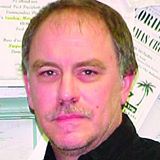Two Seaford business ventures moving ahead
SEAFORD — Economic progress reached preliminary phases Tuesday, as City Council approved plans for two projects in business campuses.

You must be a member to read this story.
Join our family of readers for as little as $5 per month and support local, unbiased journalism.
Already a member? Log in to continue. Otherwise, follow the link below to join.
Please log in to continue |
Two Seaford business ventures moving ahead
SEAFORD — Economic progress reached preliminary phases Tuesday, as City Council approved plans for two projects in business campuses.
KRM Seaford LLC’s preliminary site plan review for two 70,000-square-foot, one-story buildings were sanctioned — the first structures scheduled on KRM’s property in the new Western Sussex Business Campus.
By a 5-0 vote, council also approved a sketched site plan review submitted by MS Property Group LLC for two 9,960-square-foot flexible warehouse spaces, with room for up to six tenants per building, in the Ross Business Park.
“Both of these projects are great projects for Seaford,” said Mayor David Genshaw.
On May 5, the city’s Planning & Zoning Commission granted approval for both requests. Plans will come back through P&Z and City Council for final approval.
Jonathan D. Richard, an engineer with the Becker Morgan Group, offered city leaders a peek at KRM’s upscale design via a rendering of the bricks-and-mortar buildings at the developer’s Stevensville, Maryland, facility.
“This is a huge building. That has not happened in Seaford in a long time. We’ve had pictures, and we’ve had a vision, but to see it actually coming to be is a big deal,” said Mayor Genshaw. “We’ve been talking about this and showing KRM pictures for so many years. I think these guys are ready to roll.”
KRM’s project meets size requirements for light industrial zoning and will require subsequent approvals from the state fire marshal and the Sussex Conservation District, as well as get its engineering/stormwater system cleared, Seaford’s business official Michael Bailey said.
Groundbreaking for the Western Sussex Business Campus occurred in April 2021, shortly after Amazon announced a month earlier its plans to base a distribution center there. Based in a former DuPont warehouse, it has begun operation with a coverage zone that spans Denton, Maryland, to Long Neck and from Milford to Salisbury, Maryland.
Also in 2021, the city entered into an agreement with Chestertown, Maryland-based KRM Development for 44 acres in the 100-plus acre campus, along Herring Run and Ross Station roads.
Located on Opportunity Drive, KRM’s presence in Seaford is expected to create hundreds of job opportunities.
“Seaford has not had a 70,000-square-foot, brand-new building built here in many years. It’s a visible sign that things are changing in a positive way. I’m excited for jobs that are potentially on their way to Seaford,” said Mayor Genshaw, adding that KRM has developed 85 acres at its Stevensville facility.
In fall 2020, city officials pitched the business campus proposal to Sussex County Council. That December, the county pledged a maximum $1.88 million over several fiscal years. The city is contributing $600,000, with additional considerations in its fiscal year 2022 budget.
Further, Delaware’s General Assembly, via bond bill appropriations, provided $350,000 toward the campus. Seaford leaders are seeking more state funding in the 2023 bond bill.
Mayor Genshaw extended thanks to city councils and leadership dating back several decades, as well as to the county and state.
“This is a 30-plus-year overnight success. Lots of people have been a part of this,” he said. “We’re blessed to be standing on the 1-yard line to carry it over. … For me, it is important that people understand, yes, the city of Seaford has got a lot involved in this, but without Mike Vincent and the Sussex County Council having a vision for a Western Sussex Business Campus and (being) willing to partner with us in this, this would not have happened.
“And the state, through the bond bill but also through the Transportation Infrastructure (Investment) Fund. That is how we funded the entrance, which was $1 million-plus.”
This is an expensive investment, the mayor noted. “All of us have spent ($3 million to $4 million), and to this point, nothing has really happened. We have infrastructure, yes. But there are no jobs yet. It’s a huge upfront investment for a very long-term, future gain,” the mayor said.

 By
By 



